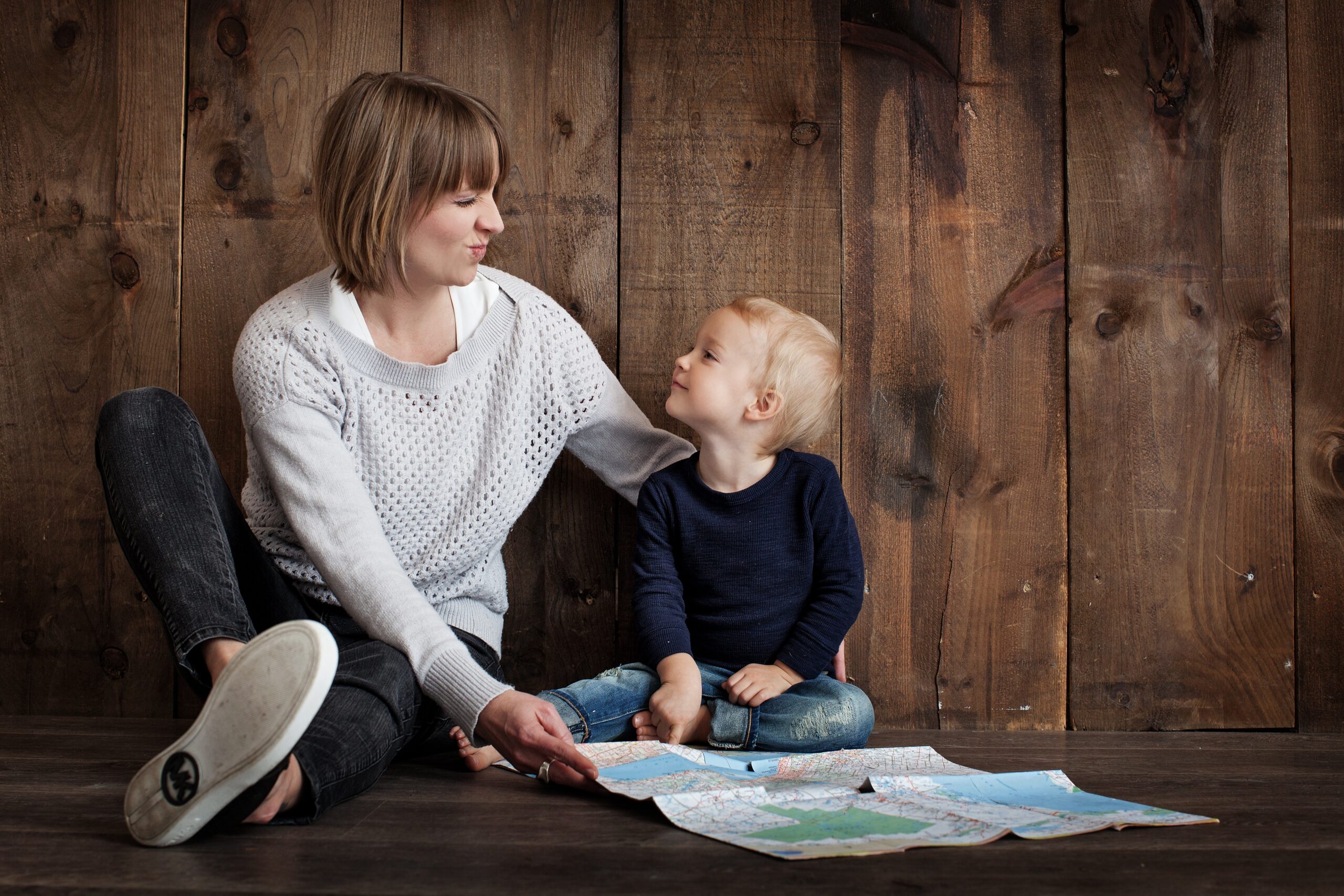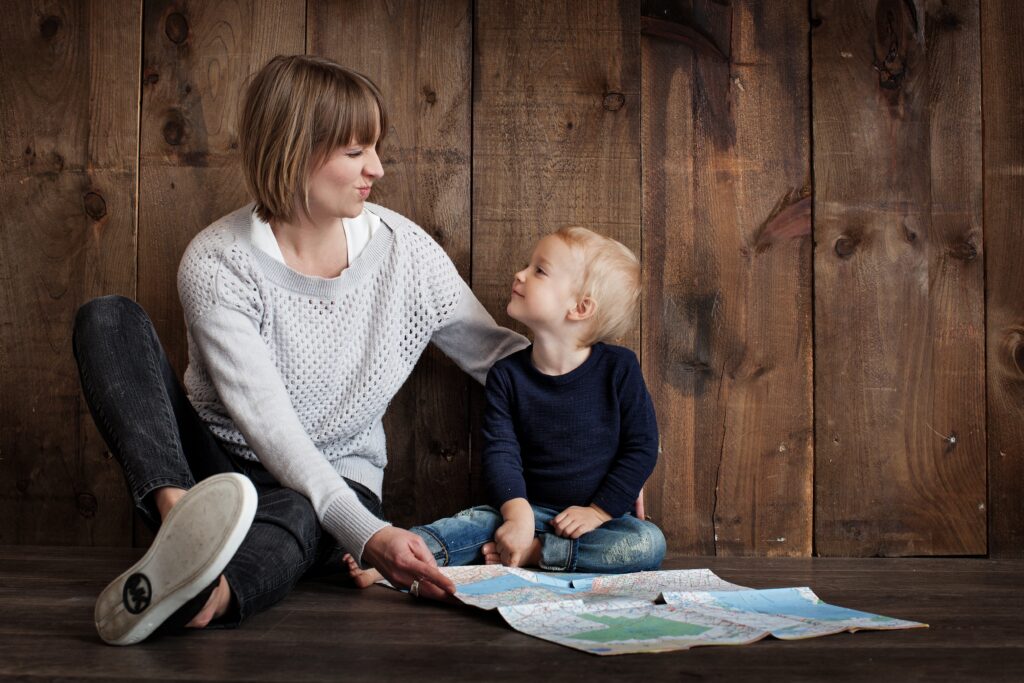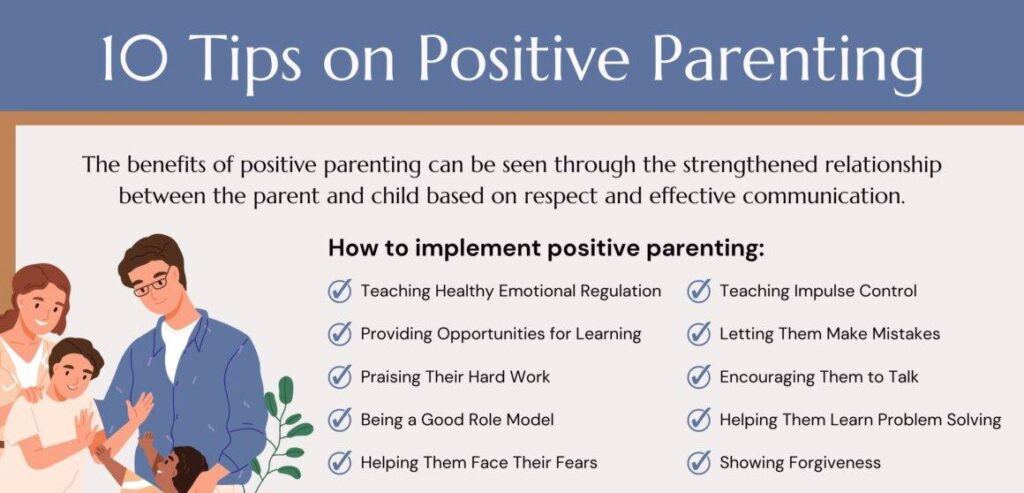
How to Ignite a Love for Movement in Kids Early
Children who develop a positive relationship with movement early in life are more likely to continue leading active lifestyles into adulthood. However, in an age where screens and sedentary entertainment are easily accessible physical activity demands creative approaches.

Introduction
Encouraging children to embrace movement from an early age is vital for their physical, emotional, and cognitive development. In a world dominated by digital distractions, fostering an active lifestyle requires strategic efforts from parents, educators, and caregivers. Movement should not be forced but rather integrated into daily life in a way that sparks curiosity and joy.
This article explores evidence-based methods to cultivate a genuine love for movement in children, ensuring they grow up with a lifelong appreciation for physical activity.
The Science Behind Movement and Child Development
Physical Benefits of Early Movement
Movement is not just a way for children to burn energy—it is a critical aspect of their development. Research highlights that regular physical activity strengthens muscles, improves cardiovascular health, and enhances motor skills. Early exposure to movement also plays a fundamental role in preventing childhood obesity and associated health issues, such as type 2 diabetes and metabolic disorders.
Engaging in physical activities promotes strong bones, enhances posture, and improves coordination. Active children develop better flexibility and endurance, making them less prone to injuries. Simple movements like crawling, climbing, and jumping contribute to long-term musculoskeletal health, ensuring children grow into physically capable and confident individuals.
Cognitive and Emotional Advantages
Beyond physical benefits, movement plays an essential role in cognitive and emotional development. Studies show that children who engage in regular physical activity demonstrate enhanced brain function, improved memory, and stronger problem-solving abilities. Activities that involve coordination, such as dancing or playing catch, stimulate neural pathways that contribute to learning and concentration.
Additionally, movement is a natural stress reliever. Physical activity triggers the release of endorphins, which elevate mood and reduce anxiety. When children are given the opportunity to move freely, they are better equipped to handle emotional challenges and improve their ability to regulate emotions.
Strategies to Cultivate a Love for Movement
Creating a Positive Association with Exercise
A key factor in ensuring children embrace movement is associating it with enjoyment rather than obligation. When physical activity feels like a chore, children may resist engaging in it. Instead, making movement a playful and natural part of their daily routine helps build a lasting positive connection.
Encouraging Play-Based Activities
Children thrive in environments where movement is fun and spontaneous. Play-based activities like running, jumping, climbing, and dancing allow children to stay active while expressing creativity and imagination. Unlike structured exercise, these activities feel less like a task and more like an adventure.
For example, instead of instructing a child to perform ten jumping jacks—such as pretending to be astronauts exploring a new planet or animals navigating a jungle—can make physical activity. Games like scavenger hunts, relay races, or obstacle courses encourage movement in an enjoyable and interactive way.
Role of Parental Involvement
Children naturally model their behavior after their parents and caregivers. When they see adults actively engaging in physical activities perceive movement as an essential part of life. Whether it’s through family hikes, bike rides, parental participation can significantly influence a child’s attitude toward movement.
Beyond setting an example, parents can make physical activity a bonding experience. Encouraging friendly competitions, setting up mini-challenges, or celebrating small milestones—such as learning to balance on one foot or successfully skipping rope.
Integrating Movement into Daily Life
Encouraging movement in children doesn’t always require structured exercise. By seamlessly integrating physical activity into daily routines, parents and caregivers can ensure that children develop a natural and lasting inclination toward movement. Simple, everyday actions can significantly contribute to their overall physical development and well-being.
Active Transportation
Walking or cycling to school rather than relying on motorized transport encourages consistent physical activity. Even short walks contribute significantly to a child’s movement needs. A brisk walk in the morning not only helps wake up the body but also improves focus and energy levels throughout the day.
For families living in areas where walking or biking to school isn’t feasible, parking a short distance away and walking the rest of the way can still add valuable movement. Additionally, encouraging children to walk the dog, ride a scooter, or even take the stairs instead of the elevator builds lifelong habits that prioritize movement over convenience.
Household Chores as Movement Opportunities
Daily chores provide an excellent opportunity to incorporate movement while teaching children responsibility. Simple tasks such as gardening, sweeping, or organizing play areas promote movement while instilling a sense of accountability. When framed as enjoyable activities rather than tedious tasks, chores become an engaging way for children to stay active.
For example, turning clean-up time into a game, such as racing against a timer or playing music and dancing while tidying up, makes the experience more enjoyable. Washing the car, raking leaves, or watering plants also provide physical benefits while fostering a sense of accomplishment. By making these activities fun and interactive, children are more likely to develop a natural inclination toward staying active.
Leveraging Technology for Physical Engagement
Technology is often viewed as a barrier to physical activity, but when used strategically, it can become a tool for encouraging movement. Interactive games and educational content can transform screen time into an engaging, movement-based experience.
Interactive Games and Apps
While excessive screen time is a concern, certain digital tools encourage movement. Dance-based video games, virtual sports, and augmented reality activities offer interactive ways to stay active while leveraging technology. Games that require physical movement, such as virtual reality adventure games, fitness-based mobile apps, and motion-sensing gaming consoles, provide a fun alternative to traditional exercise.
For instance, apps that prompt children to complete physical challenges, such as jumping jacks or yoga poses, help integrate movement into their daily routines. Some platforms even allow kids to engage in friendly competitions, which adds an element of excitement and motivation.
Educational Content on Physical Fitness
Children absorb information better when presented engagingly. Animated videos, storytelling approaches, and gamified learning modules on fitness can significantly influence their perception of movement. When children understand the benefits of exercise through entertaining and relatable content, they are more likely to develop a positive attitude toward physical activity.
Videos that showcase fun movement challenges, inspiring athlete stories, or science-backed explanations of how exercise strengthens the body can make fitness education more appealing. Additionally, fitness-themed cartoons or interactive e-books with movement prompts encourage children to get up and participate while learning.
Overcoming Common Barriers to Movement
Despite the numerous benefits of physical activity, many children face obstacles that limit their movement. Addressing these barriers is essential to ensuring a balanced and active lifestyle.
Addressing Sedentary Lifestyles
A sedentary lifestyle, often driven by excessive screen time and limited outdoor play, can negatively impact a child’s health and development. Establishing movement-friendly habits helps counteract these effects.
Limiting Screen Time
Excessive screen exposure often replaces physical activity. Establishing screen-time boundaries and incorporating regular movement breaks fosters a healthier balance. Encouraging children to take a short movement break every 30–60 minutes, such as stretching or doing a quick dance, helps prevent prolonged inactivity.
Parents can also introduce screen-time swaps, where children must complete a set amount of physical activity before engaging in screen-based entertainment. Setting up a reward system—such as earning extra playtime outdoors for every hour spent being active—can make this transition smoother.
Designing an Environment That Encourages Movement
Creating an inviting space for activity—such as a playroom with climbing structures, soft mats, or designated outdoor play zones—makes movement an accessible and attractive option for children. Having open spaces where kids can safely run, jump, and climb encourages spontaneous play.
Indoor spaces can also be optimized for movement by incorporating balance beams, small trampolines, or activity stations. Even simple additions, like placing a basketball hoop near the driveway or setting up a small obstacle course in the backyard, can motivate children to stay active without needing structured exercise routines.
Catering to Different Interests and Abilities
Every child is unique, and their preferences for physical activities may vary. Offering diverse options ensures inclusivity and sustained interest in movement.
Personalized Physical Activities
Not all children enjoy the same type of movement. Some may prefer traditional sports, while others might find joy in dance, yoga, or martial arts. Providing a variety of physical activities allows children to explore different forms of movement and find what resonates with them.
For children who are not drawn to competitive sports, activities like rock climbing, horseback riding, or swimming may be more appealing. Ensuring that children have exposure to multiple forms of movement prevents them from feeling discouraged if they do not enjoy mainstream sports.
Encouraging Social Interaction
Group activities, such as team sports or dance classes, provide motivation through peer interaction. Social engagement enhances enjoyment, fostering a long-term commitment to movement. When children see their friends participating in physical activities, they are more likely to feel excited about joining in.
Playdates centered around movement—such as going to a trampoline park, roller skating, or playing tag at the park—promote active lifestyles while strengthening social bonds. Group activities also help children develop teamwork, cooperation, and communication skills, making movement a socially rewarding experience.
The Lasting Impact of Early Movement Habits
Establishing movement-friendly habits early in life creates a strong foundation for lifelong health and well-being. When children develop a love for movement, they are more likely to carry these habits into adulthood, reducing their risk of chronic illnesses and maintaining better physical and mental health.
By making movement an enjoyable and integral part of daily life, caregivers can set children on a path toward a healthier future. Encouraging active transportation, incorporating movement into household chores, leveraging technology wisely, and addressing common barriers all contribute to fostering a lifelong appreciation for physical activity.
Through small, consistent efforts, parents and educators can help children develop a natural inclination toward movement—ensuring they grow up strong, confident, and enthusiastic about staying active.

The Role of Schools and Communities
Integrating Movement into Educational Settings
Active Learning Techniques
Incorporating movement-based learning—such as acting out stories, using gestures for math problems, or integrating physical games—enhances engagement and knowledge retention.
Daily Physical Education Programs
Well-structured physical education (PE) classes contribute significantly to children’s activity levels. Schools that emphasize PE programs help instill a love for movement from an early age.
Community-Based Initiatives
Public Play Spaces and Parks
Access to well-maintained parks, playgrounds, and recreational areas encourages outdoor activity. Safe and engaging public spaces provide opportunities for unstructured yet essential movement.
Organized Sports and Events
Community-driven initiatives, such as sports leagues, fun runs, and outdoor festivals, inspire children to stay active. Participation in such events fosters a sense of belonging while reinforcing movement as an enjoyable aspect of life.
Long-Term Impact of Encouraging Movement
Movement is an essential part of life, contributing to both physical and mental well-being. From an early age, encouraging movement can have profound long-term effects on a child’s health, development, and overall quality of life. When children are encouraged to be active, they are not only setting the stage for a healthier childhood but also for a more active and fulfilling adulthood. This article delves into how instilling a love for movement in children can positively impact their future, covering the physical, mental, and social benefits, as well as the long-term effects on their overall well-being.
Physical Benefits: Laying the Foundation for a Healthier Adulthood
One of the most obvious benefits of encouraging movement during childhood is its impact on physical health. Active children are more likely to develop strong muscles, bones, and a healthy cardiovascular system. Regular movement helps in the development of motor skills, balance, and coordination, which are crucial for various physical activities and sports throughout life.
As children grow older, those who have developed the habit of movement are less likely to engage in sedentary behaviors. This is significant because a sedentary lifestyle is linked to numerous chronic diseases, including obesity, diabetes, and heart disease. By fostering an active lifestyle early on, children are equipped with the habits and mindset necessary to maintain their health throughout adulthood. In the long term, the physical benefits of movement can help reduce the risk of these diseases and contribute to a higher quality of life.
Mental Resilience and Emotional Well-being
While the physical benefits of movement are widely acknowledged, the mental and emotional advantages are just as important. Active children tend to develop better mental resilience, which is crucial for handling the challenges that life presents. Physical activity has been shown to improve mood and reduce symptoms of anxiety and depression, helping children develop a positive attitude toward life.
Exercise stimulates the release of endorphins, the body’s natural “feel-good” chemicals, which help children feel happier and more relaxed. Furthermore, participating in physical activities helps children manage stress more effectively, a skill that will serve them well as they face challenges in adulthood. The mental resilience developed through movement can also improve focus, concentration, and problem-solving skills, which are essential for academic success and career achievements later in life.
Creativity and Cognitive Development
In addition to promoting mental resilience, encouraging movement also supports creativity and cognitive development. Physical activity, particularly unstructured play, stimulates the brain and encourages the formation of new neural connections. Children who engage in physical activities often show increased creativity, better memory, and enhanced problem-solving abilities.
Moreover, movement encourages children to think critically about their bodies and how they interact with the environment. This hands-on learning process not only strengthens their cognitive abilities but also fosters a sense of curiosity and exploration.
Positive Attitude Toward Physical Fitness
Another significant long-term benefit of encouraging movement in childhood is the development of a positive attitude toward physical fitness. Children who are exposed to a variety of physical activities from an early age are more likely to enjoy staying active as they grow older. This attitude often leads to lifelong habits of regular exercise, which, as previously mentioned, has numerous health benefits.
A positive attitude toward movement can also lead to a greater sense of body confidence. As children become more comfortable with their bodies and develop their physical abilities. Encouraging movement can thus contribute to a healthier relationship with one’s body, which is essential for maintaining mental well-being throughout life.
Social Benefits: Building Relationships and Teamwork
Movement is not only beneficial for physical and mental development but also for social growth. Many physical activities, especially team sports and group exercises, provide children with opportunities to interact with others. These interactions are crucial for developing communication skills, empathy, and cooperation.
Children who engage in physical activities with peers often form lasting friendships, which provide them with a strong social support network. Additionally, team sports teach important life skills such as teamwork, leadership, and accountability. These skills can have a significant impact on a child’s ability to work effectively in groups, both in school and later in the workplace.
Furthermore, engaging in physical activity can help children develop a sense of belonging and inclusion, which is vital for their self-esteem. Being part of a group or team fosters children to see the value in working together toward a common goal.
Long-Term Health and Well-being
The long-term impact of encouraging movement goes beyond childhood and adolescence. Children who develop a habit of physical activity to adulthood. In fact, research has shown that individuals who were active as children are more likely to continue exercising regularly in their adult years. This consistency leads to long-term health benefits, including lower rates of chronic diseases and a longer life expectancy.
Moreover, the benefits of early movement extend to mental health as well. Adults who were active as children often report feeling more energized about life. Physical activity, particularly when it becomes ingrained in one’s daily routine, promotes a sense of accomplishment and well-being that persists throughout life.
Each day of our lives we make deposits in the memory banks of our children.
Charles R. Swindoll
Conclusion
Encouraging movement in children is an investment in their long-term health and well-being. The physical, mental, and social benefits of regular movement for a healthier, more fulfilling adulthood. By fostering a love. Children develop the habits, skills, and mindset necessary to lead active, vibrant lives.
To inspire a lifelong love for movement, caregivers, educators, and community members must work together is enjoyable and rewarding. This can be achieved by integrating movement into daily routines and using technology and resources to make movement more engaging.
Ultimately, by prioritizing movement in childhood, where children grow into adults who value their health, energy.






